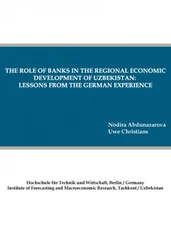If at these prerequisites transition to 6-hour shifts is completed within nominal seniority, then it is supposed that during the rest of this seniority shift duration and the number of working hours per year (6 hours×225=1350 hours) remain constant.
The sum of the thus obtained values of annual working time will give the value of actual seniority in case of coincidence of nominal seniority with similar seniority of employees retired in 2012.
Table 53
Prospects of Decreasing in Actual Seniority of Industrial Employees at Enactment of 6-hour Shifts since 2012

As it follows from the above data, with other things being equal, introduction of 6-hour shifts would lead to a significant decrease in the general number of hours worked for the period of seniority, being equal to its present value. Obviously, tempos of this decrease are determined by the value of labour saving per one industrial employee.
Note that at these prerequisites the main part of nominal seniority of workers of France and Germany would fall on the period of stable duration of shifts at the level of 6 hours. In reality, in these countries increasing in labour productivity would give an opportunity for transition to 5-hour shifts, so that the magnitude of decreasing in actual seniority would be much higher than the figures at table 50.
It is appropriate to repeat that the volume of labour saving in production was determined without considering the stimulating effect of working day reduction until 6 hours on increasing in labour productivity. Undoubtedly, this effect would show and become an additional factor of decreasing in the number of working hours for a working life.
From the fact that the dynamics of nominal seniority is in the inverse relationship to the dynamics of actual seniority, it is possible to suppose an increase in the general number of working years of industrial employees, for example, of 3 years, owing to transition to 6-hour shifts. In this case, too, actual seniority of employees working 6 hours a day would be less enduring than present employees’ actual seniority.
In Korea this decrease would be equivalent to the number of hours worked during 15 years in present conditions, in the USA it would be during 5.5 years, in the FRG it would be during 5 years, in France it would be during 1.8 years. In Italy this decrease would be quite insignificant – equivalent to 72% of present workload per year what shows absence of objective prerequisites for this increase in the retirement age in this country.
The calculations supposed the constant number of employees of the production sphere. As it was already noted, introduction of 6-hour shifts and related reduction of normal duration of a working day in the services sphere until 6 hours make prerequisites for broadening the range of able-bodied members of the society participating in fulfilment of production work. It leads to further reduction of the number of hours worked within seniority of industrial employees.
Accordingly, transition to 6-hour shifts determines prospects of regular reduction of the general number of hours worked for the period of ability to work of industrial employees with forming prerequisites for increasing in this period according to growth of life span.
Introduction of a 6-hour working day for employees of the nonproduction sphere would have a positive effect too: this measure would assist in preservation and promotion of their health, in organic combination of different kinds of social activities.
Thus, reduction of a working day until 6 hours is both an objective demand and means of modern economic development. Realization of this measure will move the society to new, higher forefronts of progress.
Economic development is a process of a higher order than economic growth. In economically developed countries not only more products are produced per capita. Employees of these countries work for less enduring time and have a more significant value of nonworking time, including free time, than employees of less developed countries.
Superiority of leading countries in volumes of time for activities immediately connected to development of human abilities is regular. Constantly progressing social labour productivity decreases labour expenditures for production of material benefits, increases time of activities in the nonproduction sphere. The processes make the basis of improving the social economic state of employees.
In economically developed countries impressive progress in reduction of working time and increasing in nonworking time of employees does not abolish the fact that the potential for realization of these processes is not accomplished in full. Appropriate working day reduction of industrial employees is prevented by decreasing in the number of employees in production what, in its turn, slows decreasing in working time of toilers of the nonproduction sphere down. As a result, introduction of three-hour shifts, forecasted by J.M. Keynes, by 2030 turns to be an unrealizable wish. Meanwhile, if the prerequisite of broadening the range of people participating in production, formulated by the great economist would be realized, three-hour shifts could be introduced by the beginning of 1990s.
That is why for a new step in economic development transition to a 6-hour working day that can have a positive effect on tempos of increasing in labour productivity and significantly improve the state of modern employees is needed. With actions of interested social forces this transition will be successfully realized.
1. Афанасьев, К.С., Казеннов, А.С., Попов, М.В. Государственное регулирование экономики как средство экономической политики. Изд-во ЛГУ им. А.С. Пушкина. 2011. – 148 с.
2. Былинская, А.А. Продолжительность рабочего времен: динамика и тенденции//«Экономика, экология и общество России в 21-м столетии». – Сборник научных трудов 17-й Международной научно-практической конференции. Ответственный за выпуск В.Р. Окороков. 2015. [текст] С. 134-141.
3. Глушич, Н.Г. Модернизация как важнейший приоритет стратегии развития России [Текст] / Н.Г. Глушич, Т.П. Логинова, А.С. Удалов, Н.А. Удалова // Экономика и предпринимательство. - 2015. - № 1 (54). - С. 42-45.
4. Ельмеев В.Я. Социальная экономия труда: общие основы политической экономии. – СПб.: Изд-во С.-Петерб. ун-та, 2007. – 576 с.
5. Золотов, А.В. Время, отработанное за трудовую жизнь: динамика и перспективы [Текст] /А.В. Золотов//Экономист. – 2014. - №3. – С. 60-67.
6. Золотов, А.В. Институциональные основы различий в продолжительности рабочего времени в индустриально развитых странах [Текст]/А.В. Золотов//Современное искусство экономики. – 2013. – №1(9). – С. 8-10.
7. Золотов, А.В. Маркс и Кейнс о сокращении рабочего времени: прогнозы несбывшиеся, но гениальные [Текст] / А.В. Золотов//Вестник Нижегородского университета им. Н.И. Лобачевского. Серия: Социальные науки. – 2015. - №4 (40). – С. 27-35.
Читать дальше













